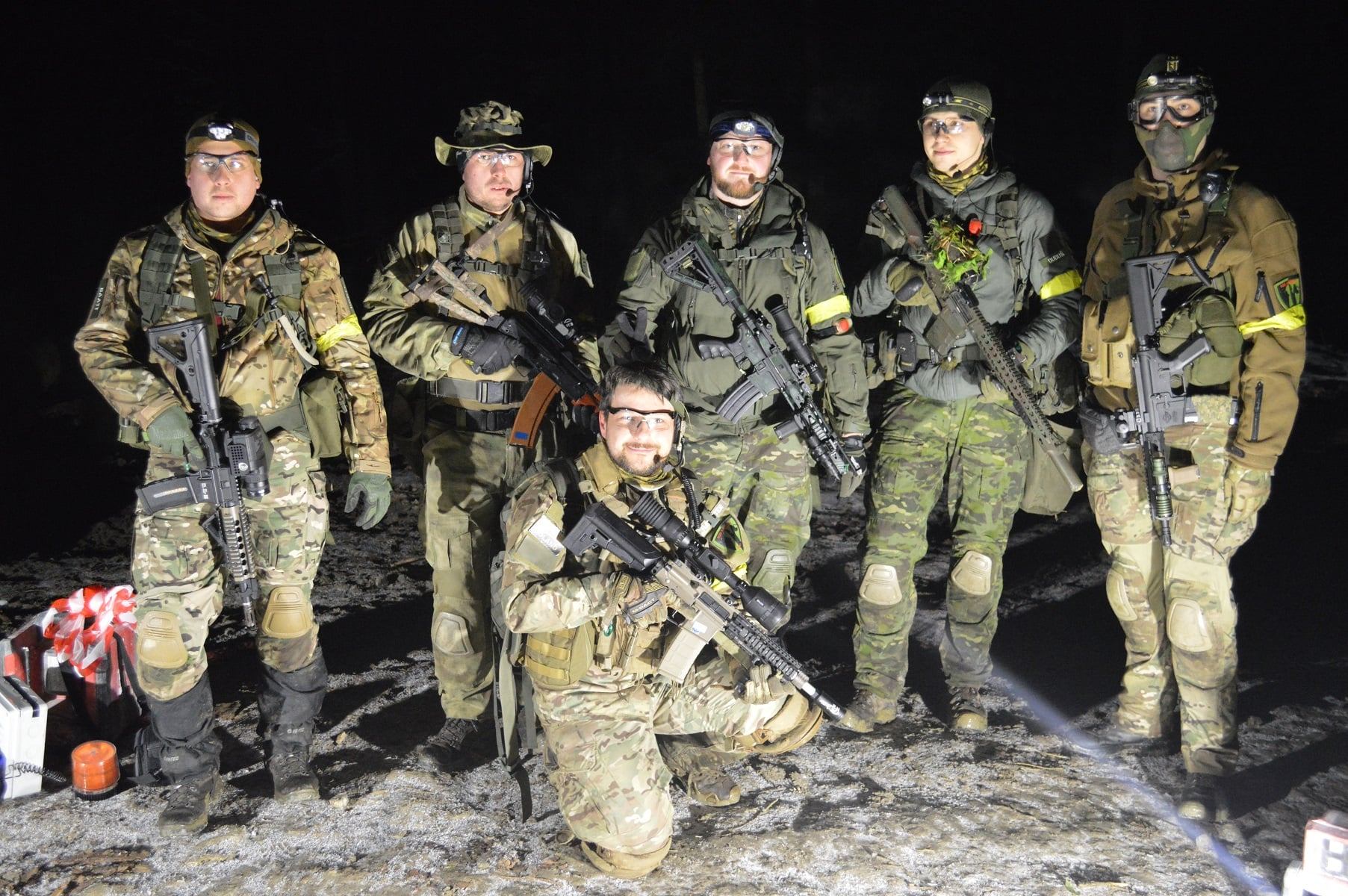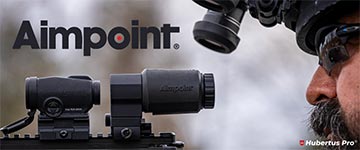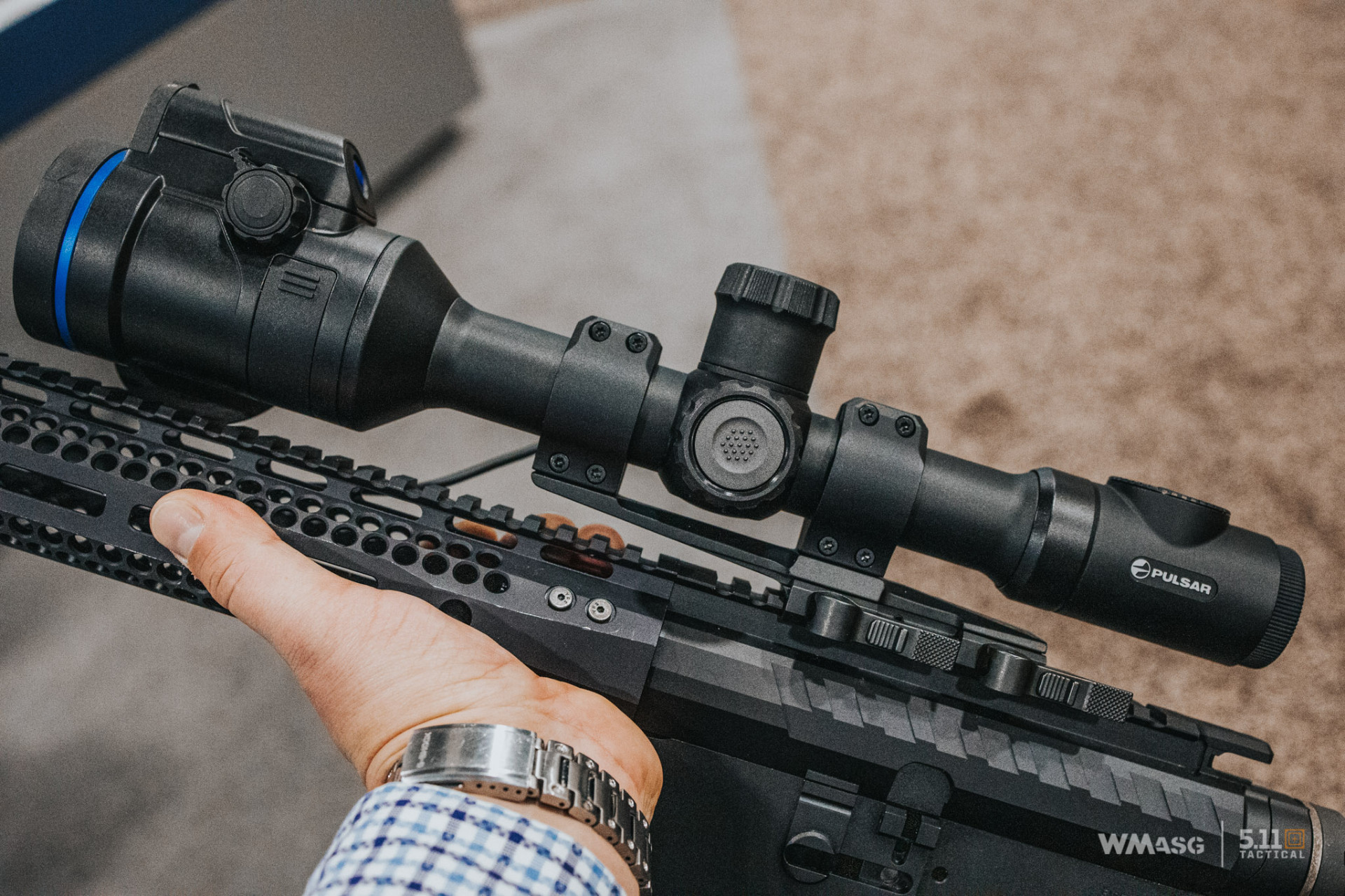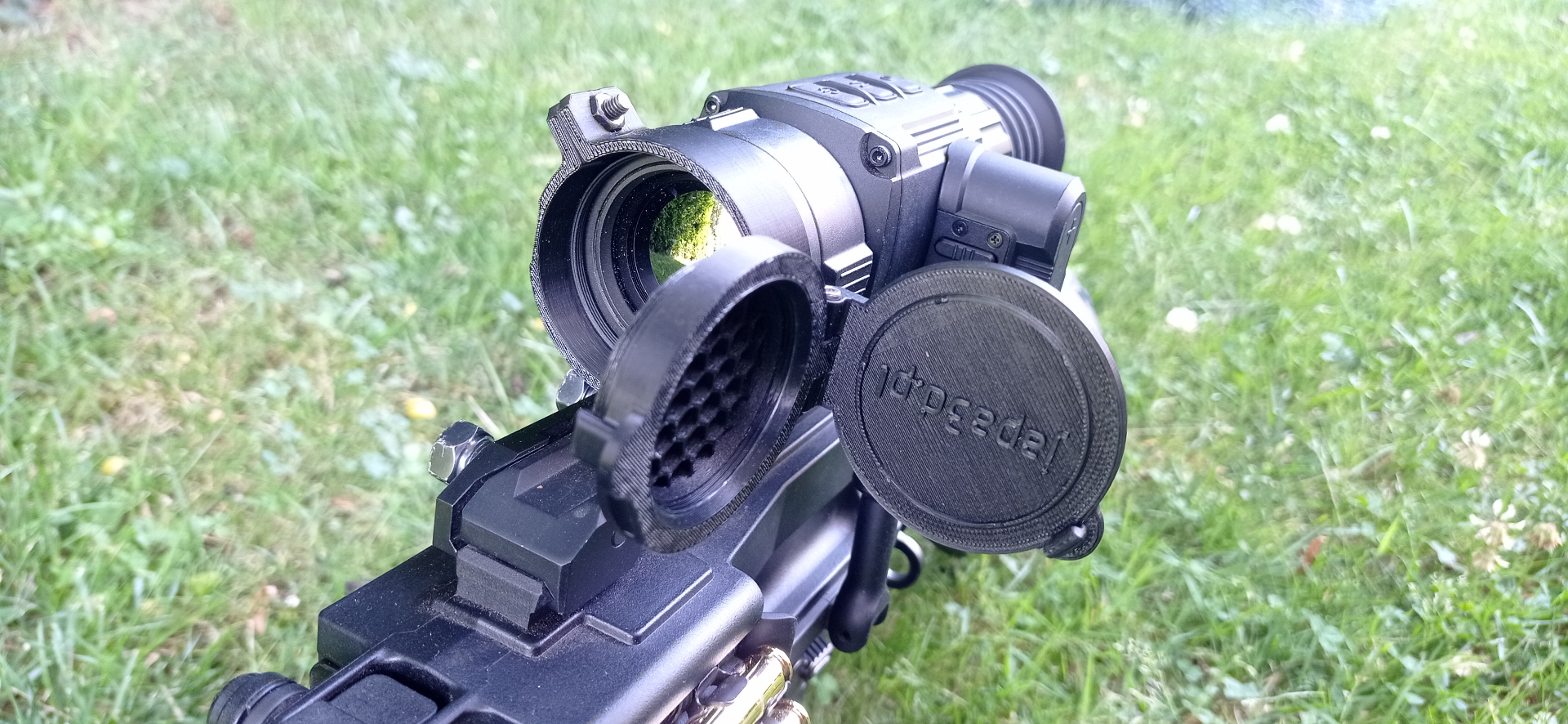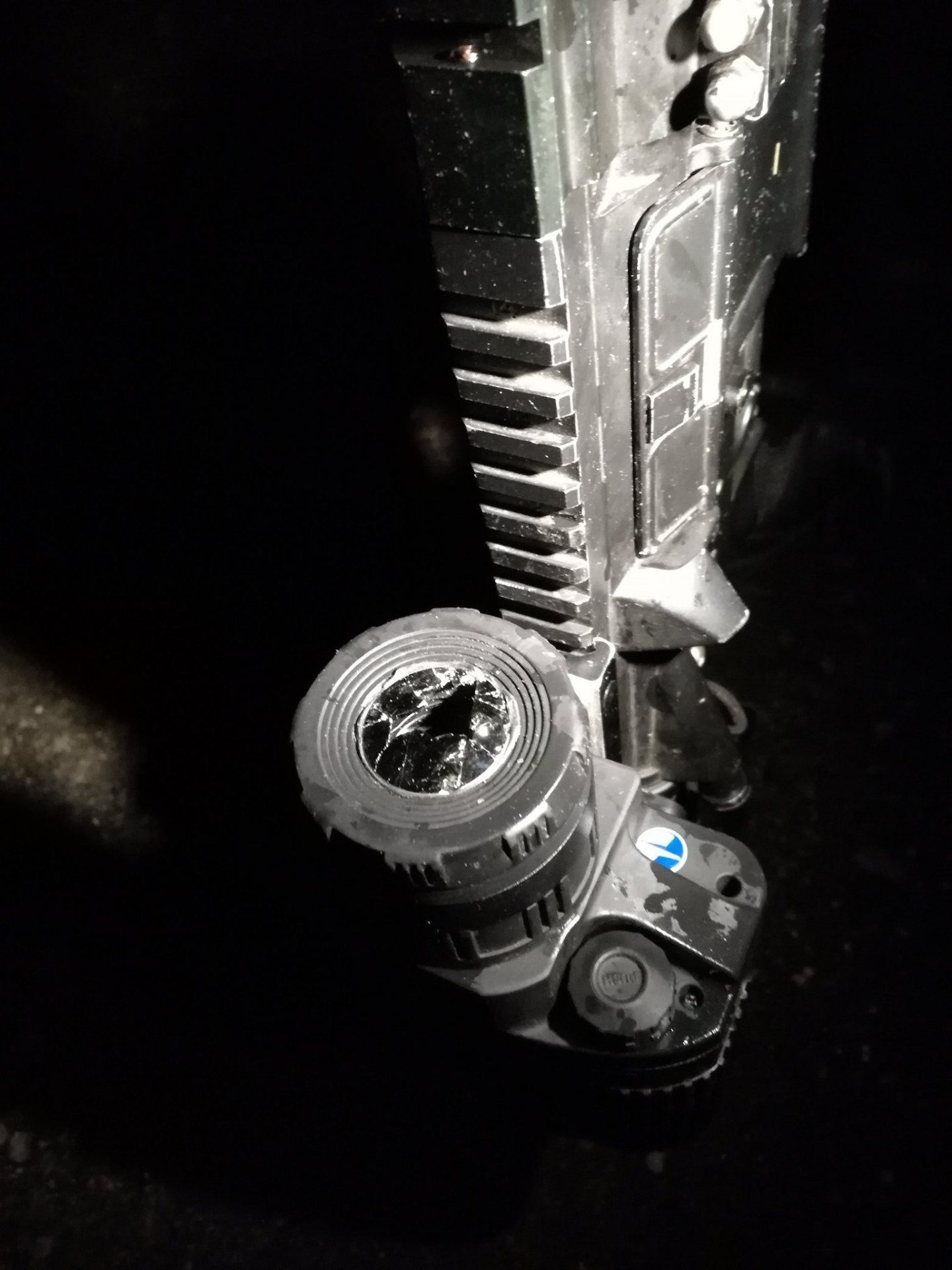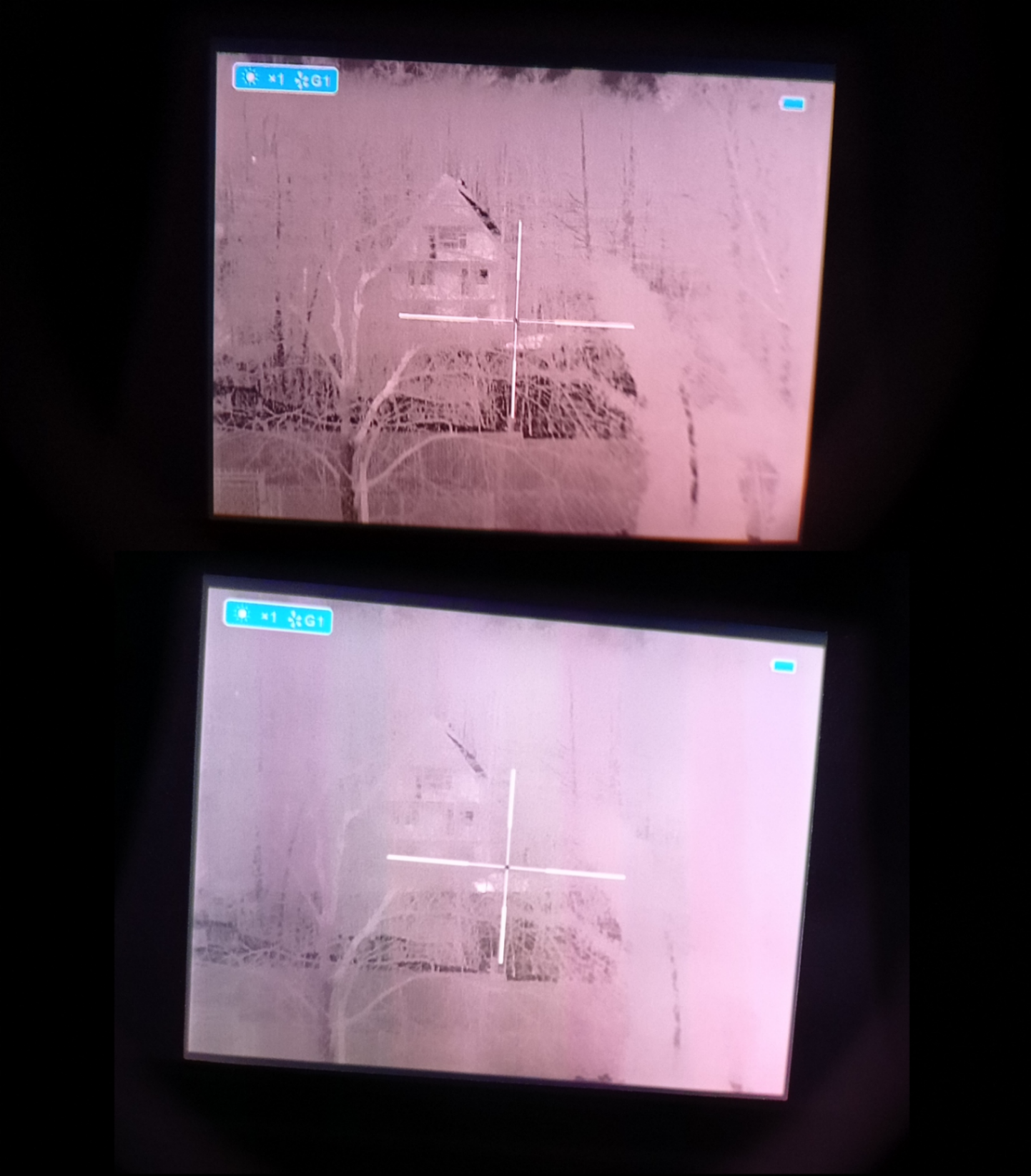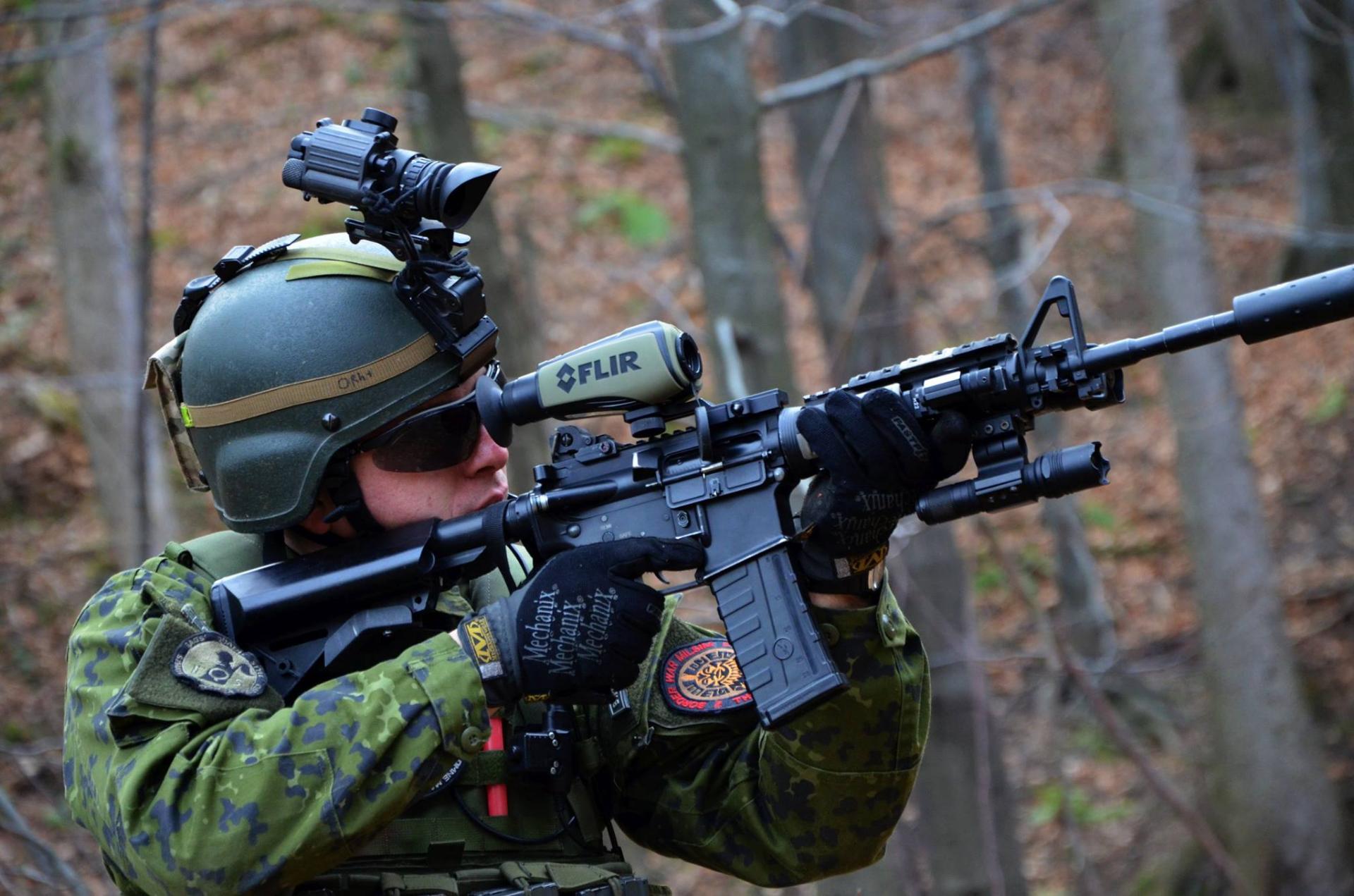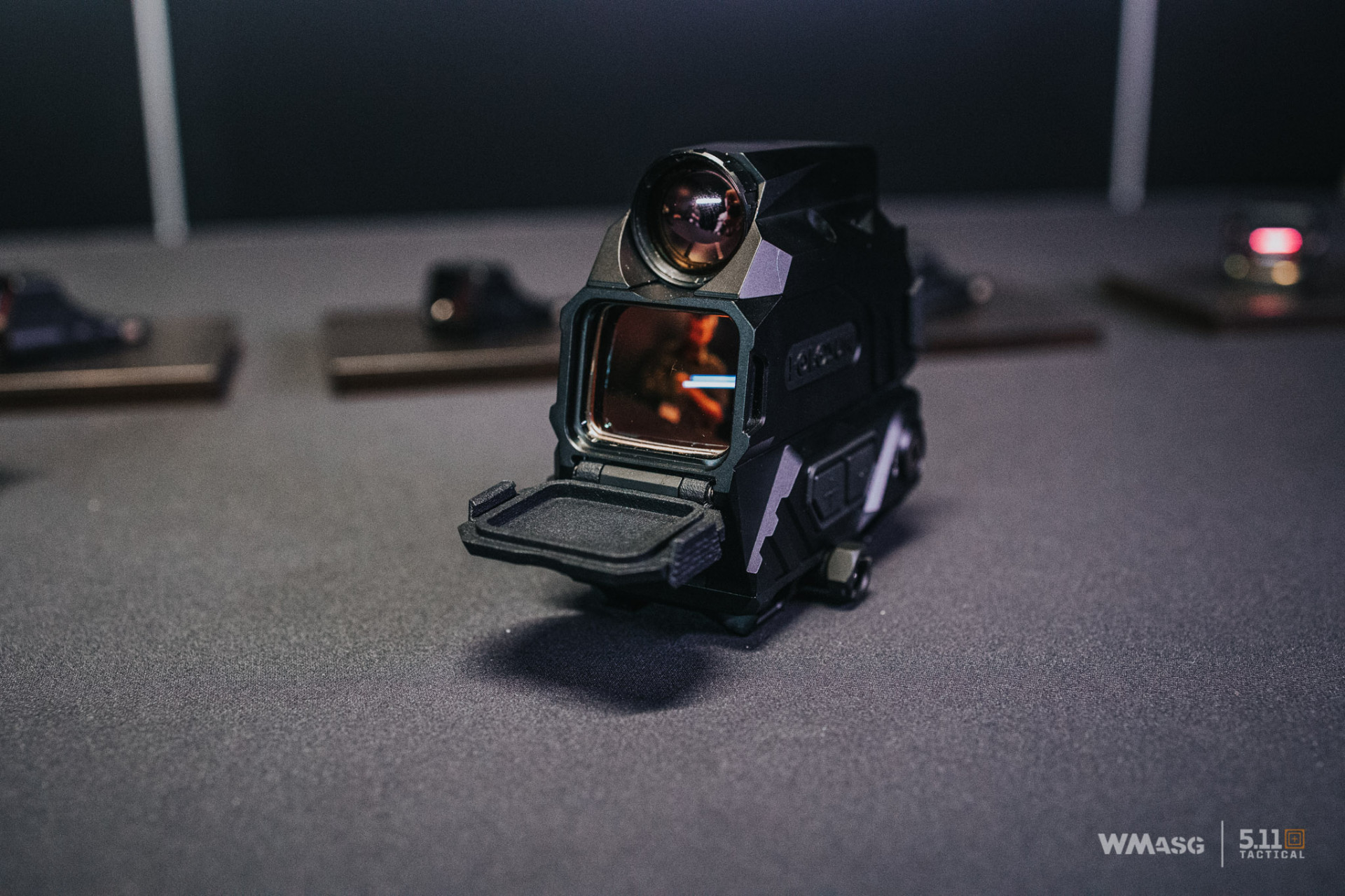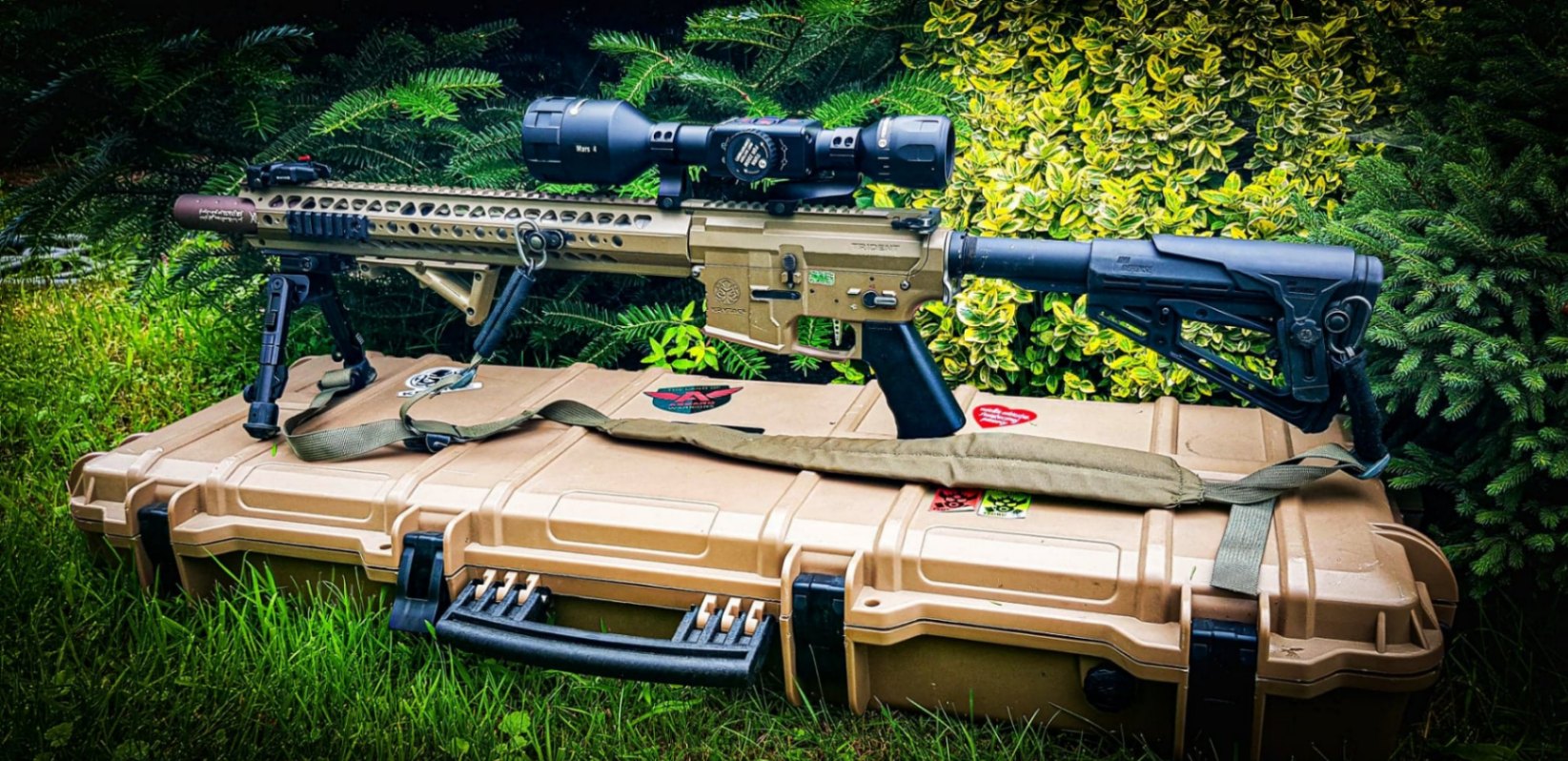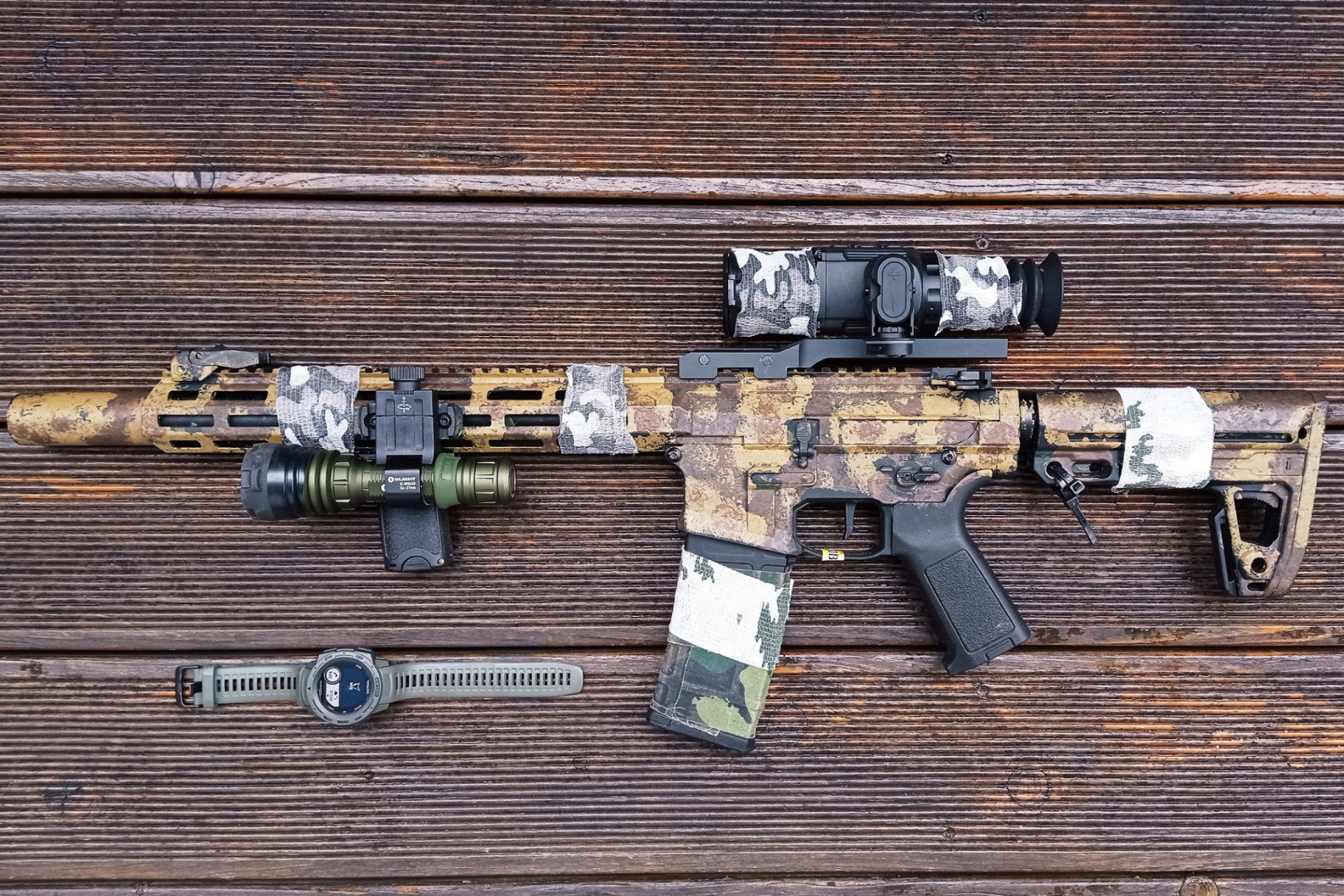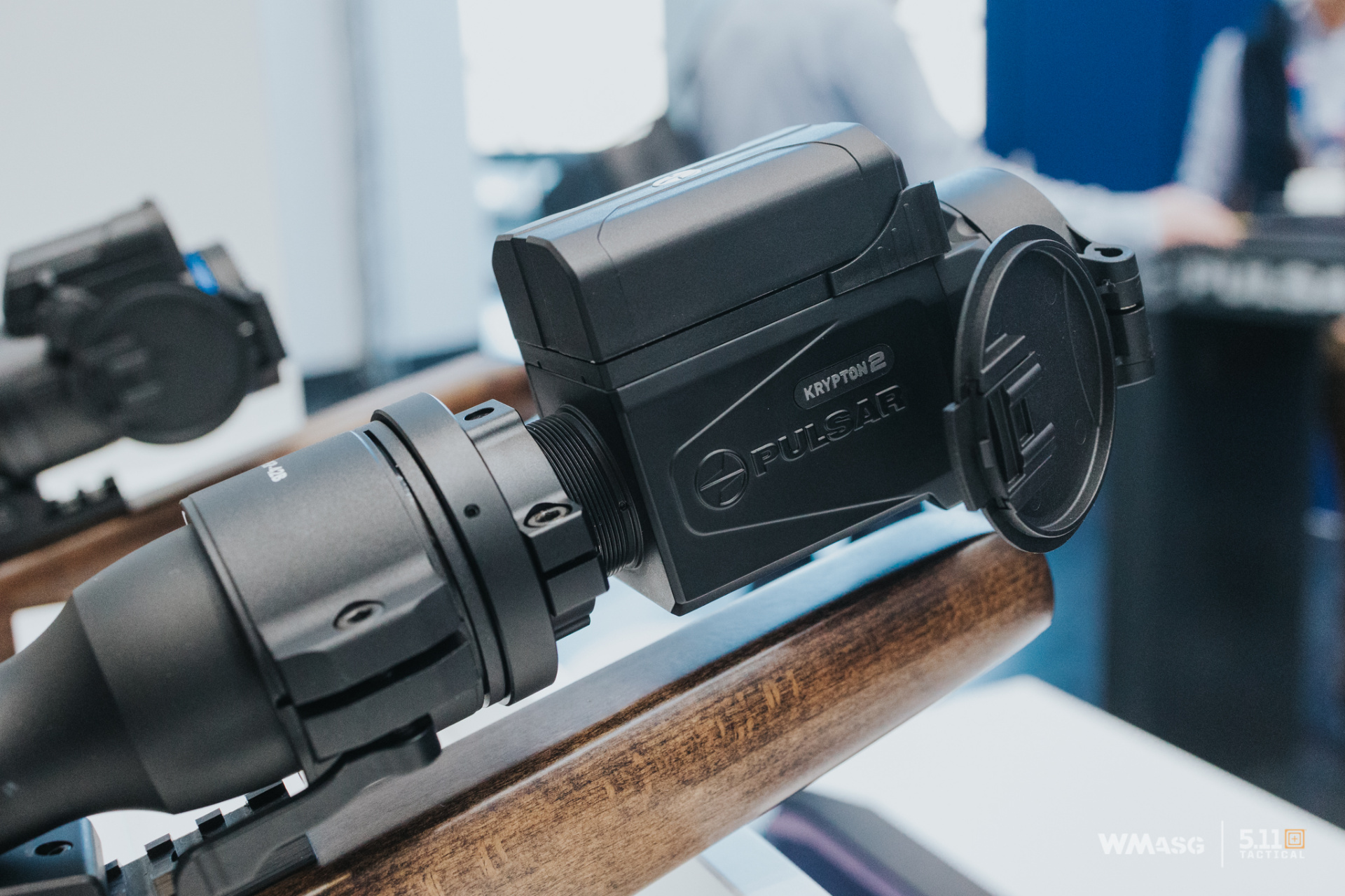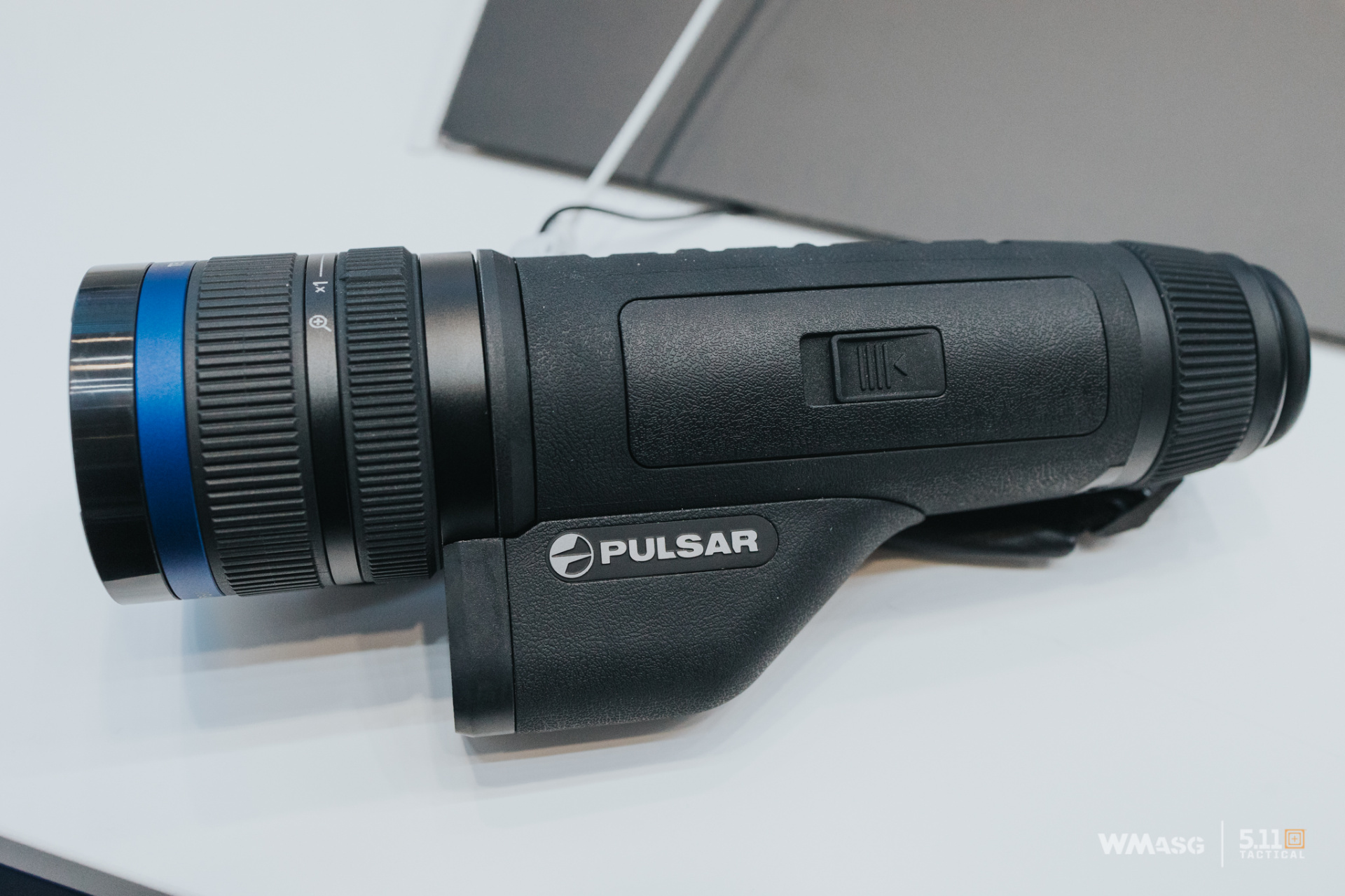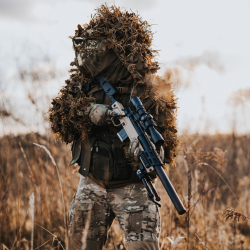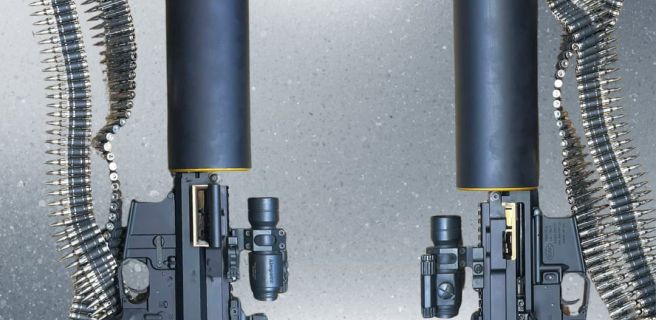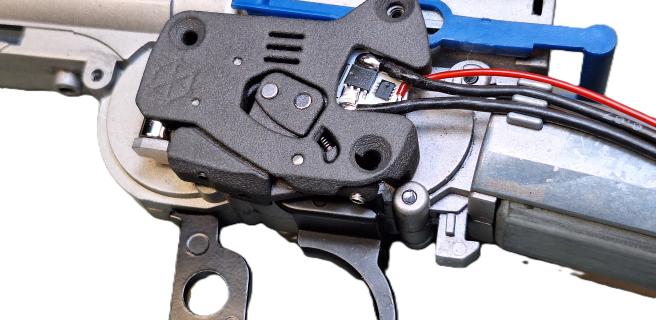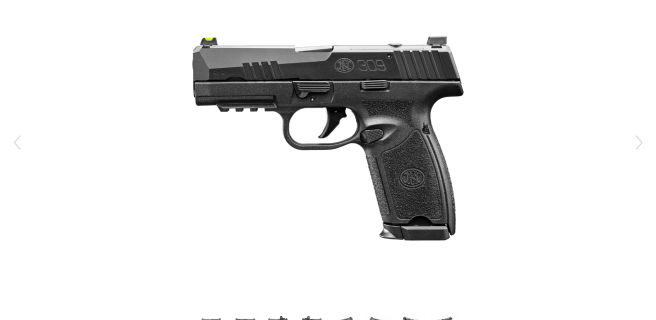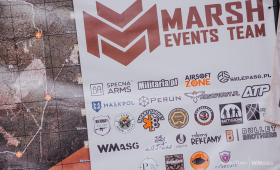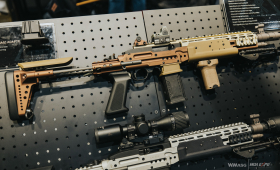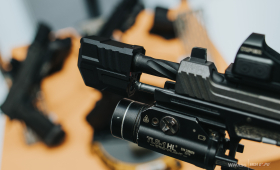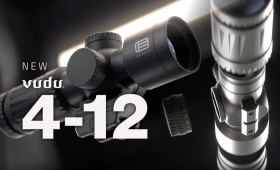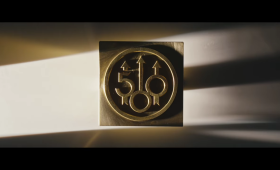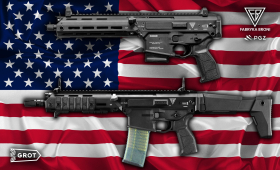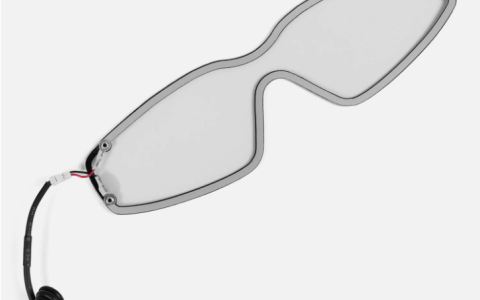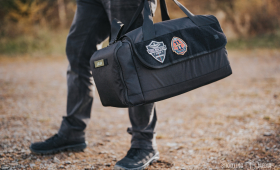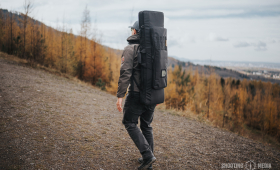There is no denying that the popularity of thermal imagers in airsoft applications is growing year by year. This phenomenon is favored by the increasing competition on the market and the falling prices of simpler devices following technological progress.
Not everyone likes this state of affairs. Although thermal imaging devices are becoming more affordable, some airsofters do not plan to spend their money on such equipment, wanting to continue playing in the classic way, from a time when such technical innovations were almost unheard of. So the idea of "unplugged" type games developed in the gaming community, played both at day and night. The use of advanced optoelectronics is prohibited during such events. Different people take part in such games: those skeptical about thermal imaging, who have a neutral attitude towards it, as well as owners of such equipment who like to play in different ways and appreciate using only classical optics and white light sources.
In this part of our guide, we will focus on the practical use of thermal imaging during airsoft games that allow it. Everything you read is the result of the writer's own experience and will be expressed in an extremely subjective way.
There are pros and there are cons
The skeptical and sometimes even hostile approach of some players to the use of thermal imagers during airsoft games is due to the fear of gaining an excessive advantage by players that use them. Some are also not fully aware of how thermal imaging works. These devices are often perceived as flawless and that they provide an unfair advantage over participants without such equipment. And what is the reality?
In short, there's a lot of truth in these fears. At least when considering the use of thermal imaging during airsoft night combat encounters. Players forced to use white light sources have incomparably less chance against thermal imagers, especially if they are not aware of what the opponent is using. Nevertheless, a close-knit group of players who are aware of the advantages and disadvantages of using thermal imaging, who try to maintain the initiative in the field, can compete on an equal footing with the owners of advanced equipment, using only good quality sources white light
The advantage of thermal imagers is not so important during the day, especially when it comes to traditional models, without going into the subject of multispectral imaging. In daylight, the first and most important difference is good visibility of targets to the naked eye and the consequent awareness of one's surroundings. Usually, every player is able to pick up a moving target within sight without much difficulty, and if the camouflage of the sought object is not optimally matched, a stationary silhouette can also be quickly spotted. Thermovision, on the other hand, gives a big advantage in detecting well-camouflaged, stationary people. It can also work in other circumstances, for example when there are large differences in sunlight in the field, making it difficult to see the enemy; when it is partially hidden by a layer of vegetation or the transparency of the air is low.
2023. Pulsar Multispectral Sights Thermion Duo DXP50 and DXP55 equipped with two sensors: CMOS 4K and thermal 640x480 @17 um.
When two competing players, one with a thermal imager and the other with a classic scope, engage in an open firefight and both can see each other well, the type of optics used ceases to matter much. Nay! Traditional scopes gain an advantage in this situation, as they allow to observe the BB's flight path longer and more accurately and take any necessary corrections.
In thermal imaging, the visibility of fired BBs is often limited by device parameters and weather conditions. Too small differences in the detected radiation between the "composite" and the environment resemble observing dark BBs through classic optics: one can see the target, one can see the reticle, but one can't always see the BBs being shot. Effective use of the thermal imager requires a perfect alignment of the reticle, a good sense of distance, a replica that shoots repeatedly and accurately, and the BB's flight path as flat as possible. Otherwise, it may be necessary to shoot an excessive amount of BBs, and the effect will still not be guaranteed .
In connection with the scenario described above, in addition to factors somewhat dependent on the user, such as knowledge and preparation of one's own equipment, there are also those independent of the player, i.e. atmospheric conditions. If there is wind, then with increasing distance at which firing is conducted, the optimal trajectory of the BB's flight may be more and more deviated. It can be much harder for a thermal imaging user to notice this, and in unfavorable circumstances it will be even impossible.
2022. Japa3d double-layer airsoft thermal imager lens cover. It is possible to fully expose the lens, protect it with a durable "honeycomb" or cover it completely.
For these reasons, I myself prefer to use thermal imaging on assault rifle and machine gun replicas, where it is possible to compensate for the effects of adverse factors by holding the trigger longer. In DMR or sniper rifle replicas, when firing is conducted at a distance of more than 70 meters, classic optics are my preferred choice.
Lens protection
Additional difficulties are also caused by thermal imaging users, protecting the lens from the effects of hits by BBs. There are opinions that it is more durable than the one used in classic optics. In many years of using thermal imaging equipment, we have seen with our own eyes both broken protectors made of germanium glass and an lens cracked by a BB that pierced a previously poor quality honeycomb protector. Replacing a damaged component was possible, but costly.
2020. Using a germanium protector on a lens can protect your device from damage. Non the less it is also vulnerable to damage.
How to effectively protect the lens? Glass and polycarbonate covers do not transmit thermal radiation in the spectrum used by thermal imaging, so installing such a devices is completely out of the question. An additional germanium lens may have sensible transmission, but they are less readily available, expensive and also prone to damage. A cover in the form of a honeycomb works best, with a durable mesh inside. However, it should be remembered that the thicker the weave, covering a larger area, the more the actual image quality of the Imager will suffer. This is manifested by a decrease in clarity and much less detail of what is seen on the screen of the device (similar to insufficient thermal sensitivity or bad weather conditions). Therefore, the dimensions of the cover and weave should be properly selected to ensure the right balance between protection and imaging quality.
2023. Effect on thermal imaging by obscuring the lens with a honeycomb cover. A similar difference can be seen between devices with higher and lower thermal sensitivity. The detail of the environment has less detail, while the warmest objects (the vehicle visible in the center of the image and the man in the upper left corner) are still visible.
On the Polish market there are contractors specializing in creating this type of covers for thermal imagers. In some cases, it is also possible to use special, three-stage designs that allow the lens to be fully covered, partially or completely exposed, depending on the situation in the field and the user's preferences.
Choosing a comfortable thermal imager
When considering the comfortable and effective use of thermal imaging during airsoft games, one needs to answer a few questions first. Is it to be used mainly for detecting threats or aiming and shooting? Can it perform both roles at the same time?
Facing the choice of the first device, I myself usually recommend buying a thermal imager in the form of a sight. Although thermal imaging monoculars, especially those worn on the head, provide great convenience and the ability to continuously scan the terrain without engaging one's hands for this purpose, threat detection is only half the battle. The located target must also be eliminated, and for this purpose a device with a reticle that can be zeroed with an airsoft replica comes in handy.
As we mentioned in the previous part of the guide, in some cases it is possible to adapt a handheld thermal imaging monocular to the role of a makeshift sight, usually by means of custom mounts. Some of these devices offer software that can imitate a reticle or an aiming point (e.g. pixel correction function). Others may have static elements on the screen (e.g. a stadiametric rangefinder) that can be used as a reference point when aiming. In such cases, a mount with the possibility of adjustment it in two planes will be useful. Why is it even considered to mount a thermal imager on a replica that is not designed for it? Such constructions are usually cheaper than full-fledged sights with analogous parameters.
2018. The simultaneous use of night vision systems (e.g. in the form of a monocular worn on the head - here q PVS-14) and thermovision (e.g. a sight, but not only).
The device mounted on the replica can also scan the area. This can be a bit more tedious, as it requires frequent aiming or moving around in a hi-ready position. Developing the right method and intervals for observing the terrain takes time and familiarity with the equipment, but it quickly becomes a natural reflex. This can be additionally helped by the appropriate selection of the base magnification and the field of view of the Imager.
The higher the magnification, the more comfortable it is to aim and shoot precisely, but due to the small field of view, scanning the surroundings takes longer and requires more looking around. Imagers with a matrix with a resolution of 384x288 pixels or more offer image detail that allows for relatively accurate shooting at airsoft distances, even with a small magnification. According to my subjective feelings, a reasonable value here is the base magnification between 1.5-2.0x. At the same time, sights with a matrix of 240x180 or 256x192 pixels may require a higher magnification to make up for the lack of sufficient resolution of the sensor when firing at objects of the size of a partial human figure (e.g. crouching or hidden behind a tree) or at a longer distance. In the case of such devices, even those that offer a basic optical magnification of 2.5-3.0x can work well. Due to the smaller field of view, their deficiencies will be shifted towards the convenience of scanning the environment.
The situation may change if a person interested in purchasing such a device has other equipment for night activities. Especially when it is a night vision device based on an efficient new generation transducer, well protected against the adverse effects of light, which works great in the passive mode. In addition to the devices mentioned in the previous paragraphs, the field of interest may also include the thermal clip-on attachment mounted on the head-worn NV system, which allows to extend all the advantages of night vision with the detection capabilities provided by thermal imagers. Despite the lack of a dedicated sight, firing can be facilitated in such a situation by the presence of an IR laser target indicator cooperating with the night vision device.
When deciding to buy a budget thermal imaging device with poor image quality, it is worth knowing that in everyday use it may not give the expected benefits and advantages in relation to traditional sights. This situation applies in particular to stand-alone thermal imaging sights, the installation of which makes it difficult or impossible to use classic daytime optics mounted above the axis of the barrel of a replica.
If you want to use cheap thermal imaging during the day, I recommend making sure that it will be possible to use an alternative sight at the same time (e.g. a reflex sight mounted on a thermal imager). Alternatively, you can choose a device with an external screen and attach it to the side mounting rail to support your threat detection capability without sacrificing your main optics for daytime operations.
2023. During SHOT Show 2023, Holosun presented their fusion sight prototype: combining traditional reflex sight with thermal imaging.
If you have a larger budget, sights adapted to multispectral imaging may come in handy. However, this is still a new solution and I do not have enough experience with it myself to give any advise in this matter.
Player and team performance
An important issue is whether the player belongs to an airsoft group or not. A properly chosen thermal imager can provide a huge advantage for the whole team - especially when it is to be their first one.
Teams that move at night without the support of advanced technology must rely heavily on their senses, be discreet, and use white light sources wisely. If they come across opponents using thermal vision (or in some cases also night vision), they are highly vulnerable to being ambushed. The rival can detect the presence of a given team long before it enters his range, and prepare accordingly.
For this reason, the first thermal imager that appears on any team member will make the biggest difference. This also applies to lower-class equipment, the prices of which are often close to the value of a single, brand name airsoft replica. The ability to detect a threat from a long distance significantly improves the comfort of moving at night. Detection of an enemy by a spearhead using thermal imaging during marches becomes much easier, thanks to which the rest of the group is able to quickly learn the approximate number and distance from an opponent. With better awareness of the situation, the commander's further decisions about engaging or breaking contact can completely change the course of the game.
2020. ATN Mars 4 384 thermal imaging sight. Version with the smallest base magnification - 1.25x - enabling comfortable scanning of the terrain at close range, thanks to the large field of view.
Even with good quality equipment, one should not forget about all the basic skills acquired during operations using only white light. During my own adventure with night airsoft games, I have found out many times that even the presence of many thermal imagers in the team does not provide full group security. Lack of proper discipline can create a false impression of safety, so it is necessary to maintain concentration at all times.
Counteracting thermal vision
What if someone is on the other side of the barrel and doesn't use advanced equipment themselves? How to counteract enemies equipped with thermal vision? This issue appeared as quickly as the first thermal imagers encountered in airsoft games. Is there any hope for such people?
There is. However, I'd be lying if I said it's easy. Counteracting thermal vision requires sensible tactical lighting, and in addition: skills, teamwork, courage and... luck.
A tactical flashlight suitable for such an application must provide a beam of light that effectively illuminates the distance exceeding the maximum shooting range of airsoft replicas, i.e. at least around 100 meters. The value in the ANSI FL1 standard given in the parameters of the flashlight cannot be suggested here, because in far from ideal field conditions, it does not provide sufficient light intensity at the described distance.
The whole idea of countering thermal imaging with white light is based on simple assumptions: the owner of a thermal imager will still see the target before someone without such technology does. Without knowledge of the position and direction of the users' observation equipment, it is almost impossible to hide and avoid detection.
2021. Delta Optical Neon S1 thermal sight. 17um sensor with a resolution of 384x288 pixels and a 2x base magnification. The photo shows the Olight Warrior X tactical flashlight and the Garmin Instinct Solar Tactical watch.
Under such conditions, the advantage of thermal imaging devices should be offset by ensuring the best possible awareness of the surroundings. This can be improved by definite and aggressive use of white light sources. With the right discipline and a bit of luck, there is a chance of spotting an enemy equipped with a thermal imager (by noticing a silhouette, or e.g. reflex from eye protection or optics) before you enter the firing range of his replica. If there is a situation in which both parties see each other, thermal imaging loses some of its advantages.
One could discuss the advantages and disadvantages of such a solution. In this way, the risk of revealing your position to other people operating only with flashlights and night vision goggles increases significantly. However, when participating in games that allow the use of advanced optoelectronics, it can be assumed that teams that are not equipped with thermal vision will be in the minority.
I have a small budget, should I buy night vision or a thermal imager?
If you have a small amount of money and wonder what will bring you more benefits in airsoft - night vision or thermal vision - then there is only one answer.
Go with a thermal imager. The cheapest night vision devices on the market require an additional IR illuminator to work properly, as the transducer installed in them is not efficient enough to effectively use the naturally available residual light. When using such night vision goggles in active mode, you run the risk of betraying your position. This is due not only to other night vision goggle owners. The red glow visible on the emitter of the IR illuminator will also be noticeable to those who do not have any equipment.
2023. Refreshed version of the thermal clip-on overlay: Krypton 2 by Pulsar.
Many enthusiasts of movies and computer games decide to buy a cheap night vision monocular with the intention of using it with a head mount. I myself am not against budget solutions. I believe that every thing, used in the right way and in favorable conditions, can work effectively. The problem is that these cheap night vision goggles are not suitable for wearing on the head. Apart from the illuminator mentioned above, they are usually heavy and offer a small viewing angle. They quickly become more of a nuisance than help.
At the same time, in the offer of various manufacturers, one can find the cheapest models of thermal imaging cameras at a similar price. Despite their parameters being very weak, at a short distance they have satisfactory detection capabilities, impossible to achieve even with slightly more expensive night vision equipment. In night conditions, the mere awareness of the enemy's presence is a huge advantage and gives the opportunity to effectively plan further actions: no matter if using the said thermal imager, white light or any other way.
Summary
We respect the decisions and opinions of others. Every airsoft player has the right to play the way they like, whether using thermal and night vision devices or using only white light sources at unplugged games.
At the same time, each person who took the time to familiarize themselves with the presented point of view is wellcommed to take part in any discussion and polemics. What do you agree with and with what you do not? Share your experiences so that people interested in the subject of the airsoft use of thermal imaging can learn as much as possible.
2023. Pulsar Telos LRF XP50 - an innovative, modular thermal imaging monocular by Pulsar with a sensitivity of NETD <18 mK.
The same applies to the previous parts of this guide, in which we tried, among other things, to decide if popular theories about thermal imaging are true and describe as faithfully as possible how its use looks like in practice. If you came here via a direct link and feel that this topic interests you, please read the first article, which you can find here.
If you are convinced that you want to explore the world of thermal imaging on your own, we encourage you to read the second part of the guide. We have included tips and simplified descriptions of important technical parameters of thermal imaging devices, which may be useful in choosing the right thermal imager for yourself. Due to the length of the material, this part has been divided into two chapters: first and second.
All the opinions and conclusions presented in the whole series of articles are a subjective reflection of the knowledge gathered on the basis of my own experience. Thank you for your attention and time.

